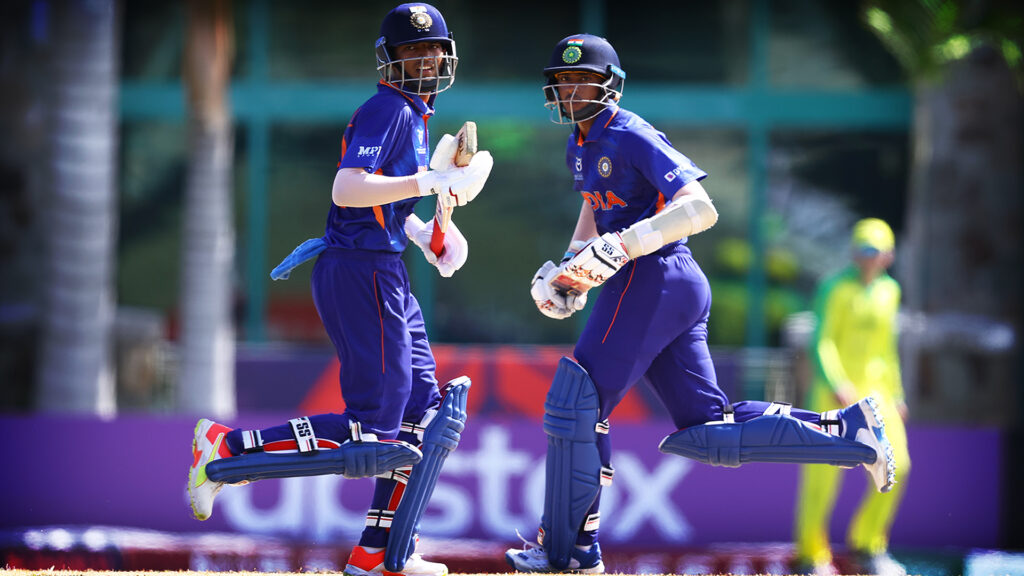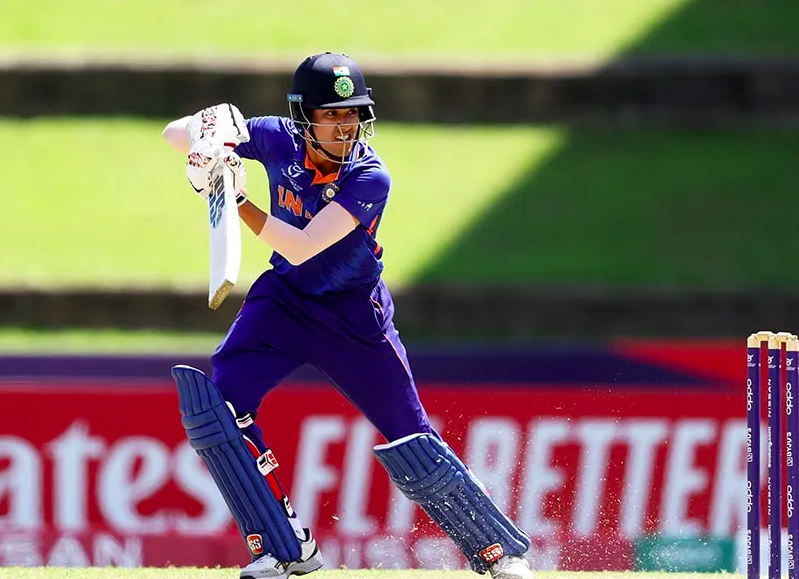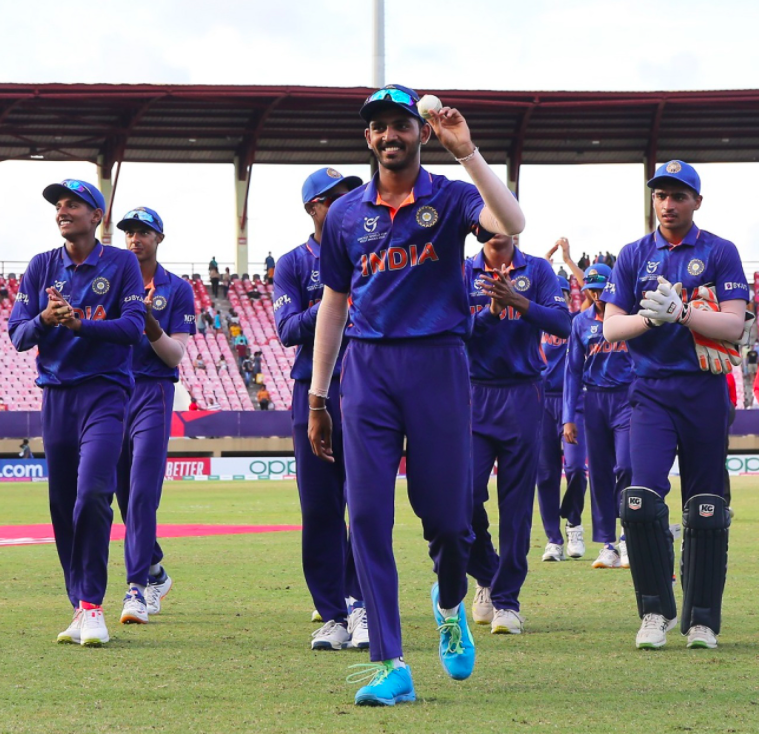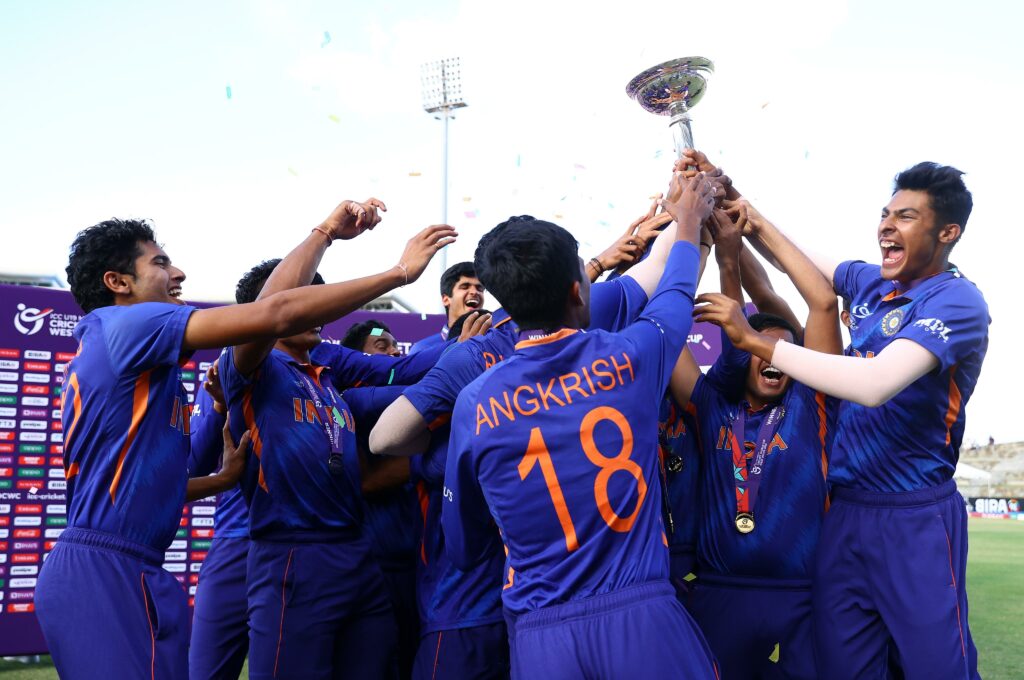Table of Contents
The Boys in Blue won the recently concluded U19 WC in convincing fashion. They remained unbeaten throughout the competition and never really looked out of their depth against any of their opponents. There were many good performances from the Indian players throughout the tournament. Here we look at three major takeaways from the tournament for Indian cricket going forward.
Good middle-order options
Indian ODI side has had arguably the best top-three in the world for a few years now. What this has meant is that these three batters often do the bulk of scoring, and the middle-order doesn’t get much time in the middle. So, when they need to save the team in the event of a top-order failure, they fail often.

During the tournament, we saw the emergence of two players who could potentially be great middle order options for India in the coming years. These players are the captain, Yash Dhull, and vice-captain, Shaik Rasheed. Both these players were the backbone of Indian batting throughout the tournament.
Rasheed scored 94 in the semi-final against Australia when India had lost both their openers early. In the final against England, he scored another important 50.
Dhull scored 82 against South Africa and 110 against Australia in the semi-final. His innings in the semi-final was especially important as India had lost both their openers early.
Such situations are exactly what the Indian middle-order has not been able to handle for the past few years, and if this trend continues, then Rasheed and Dhull might find themselves in the reckoning for an India middle-order berth sooner than expected.
A standout allrounder
A pace bowling allrounder is another area where the Indian team has been struggling since Hardik Pandya started having his fitness issues. They have tried a few players in this role, but none seem to be genuine options. One player who could potentially change this and give India a true all-round option is Raj Bawa.

Bawa is a right-arm medium fast bowler and a left-hand batter and has the potential to be a real world-beater if he can continue his development and stay focussed. He finished with the best bowling figures in the history of the U19 World Cup finals, where he took five wickets for 31 runs and then also scored 35 priceless runs with the bat.
He also took four wickets for 47 runs against the Proteas and scored 42 runs against Ireland, batting at number 3. His major achievement with the bat came against Uganda, where he scored 162 runs, this edition’s highest individual score, at a strike rate of 150.
Left-arm spin riches
India have arguably the best left-arm spinner in the world in Ravindra Jadeja. As a backup for him, they have Axar Patel, who himself has had an unreal start to his Test career. So, the Indians are well-stocked when it comes to left-arm spin options.
However, if they were to require further reinforcements in this department, the future looks bright in the form of young Vicky Ostwal.

The 19-year-old bowled with an economy rate of just 3.63 throughout the tournament and helped the team always keep the opposition under control. What made him a real threat was how he combined wicket-taking ability with such amazing control.
He took five wickets for just 28 runs against SA and then contributed with two wickets for 25 runs against Bangladesh and three wickets for 42 runs against the Proteas in the crucial knockout games.
This ability of being able to bowl dry and keep the runs down and then chip in with wickets when conditions are slightly favourable will make Ostwal a captain’s dream in any teams he plays for in the years to come.


